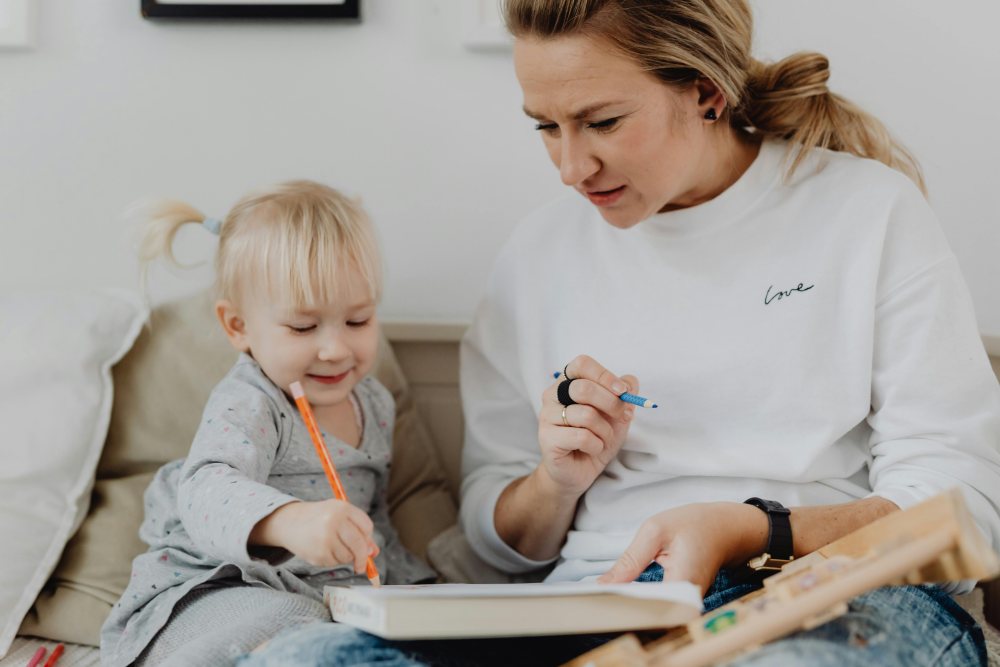Many children and adults face developmental or physical challenges that affect their ability to participate fully in daily life. Occupational therapy (OT) is a specialized healthcare discipline that helps people of all ages develop, recover, or maintain the skills needed for everyday activities. In pediatrics, occupational therapy plays a crucial role in supporting children’s physical, sensory, cognitive, emotional, and social development.
Many parents wonder, “What is occupational therapy?” and how it can benefit their child. Simply put, occupational therapy helps children participate successfully in the “occupations” of childhood — from playing and learning at school to self-care tasks like dressing and eating. Pediatric occupational therapists take a holistic approach, examining the whole child and assessing how they move, process sensory information, think, and interact with their environment.
This comprehensive perspective makes occupational therapy particularly valuable for addressing a wide range of challenges, including fine and gross motor difficulties, sensory processing issues, behavioral challenges, and developmental delays. Pediatric OT focuses on improving functional independence through purposeful activities. Therapists employ engaging techniques, such as play-based interventions and hands-on practice, to help children master tasks that may be challenging for them.
Occupational therapy involves close collaboration with parents, teachers, and other caregivers to ensure skills learned in therapy transfer to home and school environments. By understanding what occupational therapy is and how it works, parents can seek timely support for their children. OT helps children gain confidence, independence, and resilience by breaking down complex tasks into achievable steps. This approach strengthens essential life skills and creates a solid foundation for long-term success.
Pediatric Occupational Therapy – Childhood Focus
Pediatric occupational therapy focuses on helping children develop the skills necessary for independent functioning in daily life. The primary goal is to improve functional abilities through targeted interventions that address physical, cognitive, sensory, social, and emotional development. Occupational therapy for children is often designed around play, which is the primary way children learn and develop new skills.
Key areas addressed in pediatric occupational therapy:
-
- Fine Motor Skills Development: Therapists help children strengthen hand muscles and improve hand-eye coordination. These skills are essential for precise movements required for tasks such as writing, cutting with scissors, buttoning clothes, and tying shoelaces.
- Gross Motor Skills and Body Awareness: Therapy focuses on improving balance, coordination, endurance, and posture. These abilities support participation in playground activities, sports, and maintaining proper seating positions in the classroom, contributing to overall physical confidence.
- Sensory Processing Skills: Pediatric occupational therapy helps children who struggle to regulate their responses to sensory input such as sounds, textures, lights, or movement. For children who are oversensitive or under-responsive to sensory stimuli, therapists provide specialized sensory exercises that improve self-regulation and attention.
- Self-Care and Daily Living Skills: Many therapy activities focus on essential tasks, such as dressing, eating independently, using the toilet, and washing hands. These interventions help children develop the independence needed for daily routines.
- Emotional Regulation and Social Interaction: Occupational therapists help children manage emotions, navigate transitions smoothly, and interact appropriately with peers. Therapy includes teaching coping strategies and providing tools for self-calming and emotional control.
What Do Occupational Therapists Do?
For parents, it is valuable and necessary to know “what do occupational therapists do?” Occupational therapists are healthcare professionals who play a multifaceted role in assessing and improving a child’s ability to participate in everyday activities. Their work encompasses comprehensive evaluation, goal setting, direct therapeutic intervention, environmental modifications, and family education. OTs guide children through critical developmental stages using evidence-based methods and supportive therapeutic approaches.
Here is the key answer to the question “What do occupational therapists do?”:
-
- Comprehensive Assessment: Occupational therapists administer standardized tests, observe children in various settings, and conduct interviews with parents to identify developmental delays. They evaluate fine motor skills, sensory processing abilities, coordination, self-care capabilities, and cognitive functioning.
- Individualized Treatment Planning: Based on assessment results, OTs create detailed, personalized treatment plans with measurable goals tailored to each child’s developmental level, strengths, and specific needs. Plans are regularly reviewed and adjusted based on progress.
- Direct Therapy Services: Therapy sessions incorporate play-based interventions such as obstacle courses, sensory bins, arts and crafts activities, and writing exercises. These engaging activities help children build necessary skills while having fun and staying motivated.
- Recommending Adaptive Tools and Modifications: Occupational therapists recommend and implement adaptive equipment such as weighted vests, pencil grips, visual schedules, and sensory tools. These modifications support children’s daily functioning at home, school, and in the community.
- Family and Teacher Coaching: OTs provide strategies and training to parents and educators to support children’s success in homework, classroom participation, sensory regulation, and independence. This collaboration ensures skills generalize beyond the therapy setting.
Therapy for Kids – OT Approaches and Techniques
Occupational therapy employs a variety of evidence-based, child-centered approaches tailored to each child’s developmental needs. These therapy for kids combine structure with creativity, transforming therapeutic goals into engaging, meaningful activities that help children develop lasting functional skills.
Common approaches and techniques:
-
- Sensory Integration Therapy: This approach helps children regulate their responses to sensory input through activities involving textured materials, swings, weighted objects, tactile play, and movement-based exercises.
- Fine Motor and Handwriting Training: Therapists use activities that strengthen hand muscles and improve grasp patterns and writing skills through hands-on manipulatives, cutting exercises, and therapeutic writing programs.
- Behavioral and Emotional Regulation Strategies: Children learn coping skills, calming routines, and transition strategies to manage emotions and behaviors more effectively in various situations.
- Visual-Motor and Visual-Perceptual Training: These therapy for kids support hand-eye coordination and visual processing skills essential for reading, writing, catching balls, and participating in sports.
- Daily Living Skills Training: Therapists teach practical self-care tasks, including dressing, feeding, grooming, and organizing belongings through step-by-step instruction, modeling, and adaptive strategies tailored to each child’s abilities.
Occupational Therapy for Toddlers – Early Intervention
Occupational therapy for toddlers focuses on building fundamental skills during critical early developmental periods when the brain is most adaptable. Early intervention provides significant benefits by addressing challenges before they impact later learning and development. OT supports toddlers in multiple developmental areas simultaneously.
Key focus areas for toddlers:
-
- Sensory Processing Support: Toddlers learn to respond appropriately to various sensory experiences, including different textures, sounds, visual stimuli, and touch, through therapeutic sensory play activities.
- Motor Development: Therapists utilize age-appropriate materials and activities, such as building blocks, grasping toys, and movement games, to develop both fine and gross motor skills, as well as hand-eye coordination.
- Emotional Regulation: Toddlers learn to cope with transitions, communicate their needs, and manage emotions through structured interactions with caregivers and therapeutic play.
- Feeding Skills: Occupational therapy for toddlers addresses feeding difficulties, food selectivity, and texture aversions, providing support and guidance to individuals with these challenges. Toddlers develop chewing skills and gain independence in self-feeding through gradual exposure and practice.
- Early Self-Care Skills: Therapy introduces foundational self-care abilities, such as hand washing, simple dressing tasks (pulling up pants and putting on shoes), and putting away toys.
Early occupational therapy intervention for toddlers establishes crucial developmental foundations that support future learning, independence, and participation in daily activities.
Occupational Therapy Examples – Practical Applications
Real-world occupational therapy examples demonstrate how therapeutic interventions address specific daily challenges and transform them into achievable skills. These practical applications show how OT directly supports children’s success at home, school, and in the community.
Common occupational therapy interventions:
-
- Handwriting Support: Therapists create specialized activities, including tracing exercises, pre-writing patterns, and guided writing practice to improve letter formation, pencil grip, writing legibility, and endurance.
- Sensory Regulation Tools: Children learn to utilize weighted blankets, fidget toys, noise-canceling headphones, compression vests, and sensory breaks to maintain calmness, focus, and regulation throughout the day.
- Self-Care Training: Occupational therapists teach children to dress independently, eat with utensils, use the toilet, and complete grooming tasks through a combination of modeling, visual cues, adaptive equipment, and step-by-step instruction.
- Play-Based Motor Development: Activities such as stringing beads, completing puzzles, climbing obstacles, and balancing exercises improve motor planning, coordination, and physical confidence.
- Classroom Support Strategies: Therapists develop visual schedules, provide adaptive seating options (such as wobble cushions and stability balls), and suggest organizational tools to help children focus and succeed academically.
These practical occupational therapy examples illustrate how occupational therapy enables children to overcome daily challenges, build confidence, and acquire the skills necessary for independent and successful participation in all aspects of life.
Want to learn more tips and tricks for loving your life?
Snag a free workbook and get inspiration on all the ways to love your life even more.
>>Click Here to Discover Additional Articles on Strategies to Falling in Love with Your Life <<









